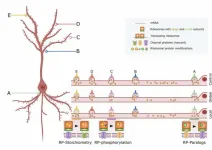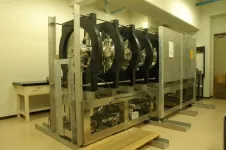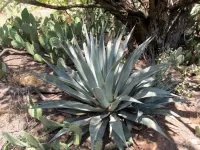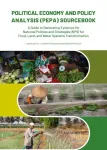(Press-News.org) Emissions associated with mining operations in Africa’s Copperbelt can be quantified from space, according to new research led by the National Center for Atmospheric Research (NCAR).
Mining for copper and cobalt in Africa has rapidly increased, the latter in response to growing global demand for electric vehicles, laptops, smartphones, and other devices that rely on lithium-ion batteries, the vast majority of which contain cobalt.
The new study is published in Geophysical Research Letters, a journal of the American Geophysical Union, and shows for the first time that satellite monitoring can provide valuable information on the impact of the mining boom on air quality in nearby towns and villages. The research also opens the door to the possibility of remotely monitoring increases and decreases in mining activities in a region of the world where surface monitoring is scarce and reporting by mine operators can be inconsistent or altogether absent.
“Mining operations can have a significant impact on quality of life for the people living nearby,” said Pieternel Levelt, director of NCAR’s Atmospheric Chemistry Observations and Modeling Lab and senior author of the paper. “This research can help us better understand how severe and widespread those impacts may be in mining areas like the Copperbelt while also giving us a tool for estimating the growth of mining activities in remote regions that are driving those impacts.”
The work was funded by the U.S. National Science Foundation, which is NCAR’s sponsor, as well as by the Royal Netherlands Meteorological Institute (KNMI). The list of co-authors includes researchers from KNMI and the Technical University of Delft in the Netherlands, the Royal Belgium Institute for Space Astronomy, the Cooperative Institute for Research in Environmental Sciences (CIRES) at the University of Colorado Boulder, and the National Oceanic and Atmospheric Administration (NOAA) as well as the National Centre for Scientific Research (CRNS) and the Observatoire Midi-Pyrénées, both in France.
An immense increase in production
Africa’s Copperbelt straddles Zambia and the Democratic Republic of Congo, which produced 73% of the world’s supply of cobalt in 2022, according to the Cobalt Institute. Cobalt production in the Copperbelt increased about 600% between 1990 and 2021, according to data from the U.S. Bureau of Mines and the U.S. Geological Survey.
The vast majority of cobalt is produced as a byproduct of copper mining, though some copper mines do not produce any cobalt. Most of the energy consumed in copper and cobalt mining — including the operation of large machinery and electricity production — is generated by burning diesel fuel, which in turn produces nitrogen oxides, a key ingredient in smog.
To quantify the emissions, the research team turned to data from the TROPOspheric Monitoring Instrument (TROPOMI) onboard the European Space Agency’s Copernicus Sentinel-5 Precursor satellite (S-5P). TROPOMI can monitor a number of trace gases important for air quality, including nitrogen dioxide.
While biomass burning, urban activity, and other industrial operations beyond mining also produce nitrogen dioxide — as do some natural processes — the researchers found that they could distinguish the emissions from copper and cobalt mines in the data. They also found that the annual emissions from each mine strongly correlated with their annual metal production.
“We thought that these copper and cobalt mining operations could affect local air quality; we just didn’t know how much given the lack of ground monitoring in the region,” said NCAR scientist Sara Martínez-Alonso, who is the study’s lead author. “Understanding this is particularly important when mining-related activities proliferate in close proximity to — or even inside of — population centers, as is the case in the Copperbelt. With satellite observations we were able to quantify emissions from individual mines and put those emissions into perspective.”
The S-5P satellite that carries TROPOMI is polar-orbiting and passes over any given location on the Earth’s surface once a day, limiting the number of observations over the Copperbelt. A geostationary satellite over the continent could provide a much more in-depth picture of emissions in the region, providing hourly instead of daily observations, according to Levelt. Currently, there are no geostationary satellites over Africa or anywhere in the global South.
“A geostationary satellite over Africa could provide the data needed to create accurate air quality forecasts for populations that are at increased risk,” Levelt said. “Hourly observations over urban areas could show the daily evolution of pollution levels and sources, and the information could inform local regulatory agencies.”
This material is based upon work supported by the National Center for Atmospheric Research, a major facility sponsored by the National Science Foundation and managed by the University Corporation for Atmospheric Research. Any opinions, findings, and conclusions or recommendations expressed in this material do not necessarily reflect the views of the National Science Foundation.
About the article
Title: “S-5P/TROPOMI-derived NOx emissions from copper/cobalt mining and other industrial activities in the Copperbelt (Democratic Republic of Congo and Zambia)”
Authors: S. Martínez-Alonso, J.P. Veefkind, B. Dix, B. Gaubert, N. Theys, C. Granier, A. Soulié, S. Darras, H. Eskes, W. Tang, H. Worden, J. De Gouw, and P.F. Levelt
Journal: Geophysical Research Letters
END
Monitoring African copper and cobalt mining emissions from space
NCAR researchers explore a new way to track the impact of increased mining activities on the air quality in the Copperbelt
2023-10-10
ELSE PRESS RELEASES FROM THIS DATE:
Study compares health information exchange data versus patient self-reports to measure cancer screening uptake
2023-10-10
INDIANAPOLIS – Knowing which populations are following cancer screening guidelines is important to public health officials and policy makers as well as researchers developing strategies to improve adherence. A recent study is one of the first to compare using health information exchange (HIE) data with patient self-reported data as a means of gathering this intelligence.
The researchers found that completeness of information differed by data source and screening test. HIE data provided more information than patient self-reports about ...
Seamlessly multiplexing memory storage and recall
2023-10-10
Every day we store memories, some of which we are able to recall later. But while we do so, do we keep on storing? Yes! We cannot afford to stop memory formation while we are retrieving prior ones. Imagine, for instance, that you are navigating the city while recalling last night’s events to a friend tagging along. Your brain must memorize aspects of the route even while you are in the story, so that you can find your way back later or reach your next destination.
We seem to perform this task without much conscious effort. Big deal, one could say, as we know that the brain has trillions of synaptic connections, so parallel processing ...
UNIST recognized for design excellence at IDEA 2023!
2023-10-10
The design concept of a disaster alert balloon, capable of changing its color like a chameleon, has been honored for its design excellence at the internationally renowned International Design Excellence Award (IDEA) 2023.
The awarded concept, named SAFEUP, serves as a hazard indicator, providing visual information about the condition of accident sites from a safe distance. Developed by Professor Chajoong Kim and his team in the Department of Design at UNIST, SAFEUP has received the ‘IDEA 2023’ Bronze Award in the category of Concepts & Speculative Design. The ...
The ribosome–depression link
2023-10-10
A group of ribosomal protein genes connect animal models of depression to human patients with major depressive disorder. In order to research depression treatments, scientists use a mouse model, inducing a state with similarities to depression though exposure to variable, unpredictable, and uncontrolled stressors over days or weeks. But is this state molecularly akin to what humans with major depressive disorder experience? To find out, Xiaolu Zhang, Mahmoud Ali Eladawi, and colleagues examine transcriptomics data from postmortem human brain tissue and from several mouse models of stress, seeking to pinpoint conserved ...
Ionic crystal generates molecular ions upon positron irradiation, finds new study
2023-10-10
Positron, the antiparticle of electron, has the same mass and charge as that of an electron but with the sign flipped for the charge. It is an attractive particle for scientists because the use of positrons has led to important insights and developments in the fields of elementary particle physics, atomic physics, materials science, astrophysics, and medicine. For instance, positrons are known to be components of antimatter. They are also powerful in detecting lattice defects in solids and semiconductors and in structural analysis of the topmost surface of crystals. Positronic compounds, namely ...
Maternal obesity predicts heart disease risk better than pregnancy complications
2023-10-10
First study to determine the role pre-pregnancy obesity plays in future poor heart health
Those with overweight or obese BMI in early pregnancy had a higher risk of developing hypertensive disorders of pregnancy
‘If pre-pregnancy obesity is the culprit or cause of risk, we should be targeting this with interventions’
Pregnancy complications such as preeclampsia and gestational diabetes have recently been associated with a higher risk of developing heart disease later in life. But a new Northwestern Medicine study has found obesity before or during ...
Pregnancy complications increase and unmask short- and long-term cardiovascular risk for people with obesity
2023-10-10
Having obesity before and during early pregnancy appears to be a strong indicator of risk for developing future cardiovascular disease and was significantly linked with adverse outcomes during pregnancy such as high blood pressure, preeclampsia, and gestational diabetes, according to a study published in Circulation Research that was funded by the National Institutes of Health. Researchers have known obesity is a risk factor for cardiovascular disease and pregnancy complications related to blood pressure. However, they did not know which factors – obesity or the pregnancy complications – played larger roles in influencing a person’s ...
Are we running out of water? Water security threatened by droughts and heatwaves worldwide
2023-10-10
Increased demand for water due to global population growth, coupled with the increasing frequency of extreme weather events, endangers our water security. Nonetheless, little is known about the relationship of water use by sectors and the occurrence of drought-heatwave events, particularly at the large scale. To unveil this issue, a group of researchers from the Department of Physical Geography from Utrecht University evaluated the responses of sectoral water use during droughts, heatwaves and compound (combined) events at a global scale. The study published in Environmental Research Letters shows that stronger sectoral water use responses are found for heatwaves compared to ...
Researchers find pre-Columbian agave plants persisting in Arizona landscapes
2023-10-10
A new paper in the Annals of Botany, published by Oxford University Press, reveals that researchers have found unaltered agave plant species cultivated by several early cultures including the Hohokam people, a large Native American group in the Southwest that existed between 300 and 1500 CE.
Agave plants have been of great economic and social importance in the Americas for at least 9,000 years. Before people cultivated corn, agave plants were one of their main carbohydrate sources. Archaeological research indicates the Hohokam increased agricultural potential by building terraces for agave dry farming. Agricultural features such as terraces and rock piles were especially characteristic ...
Food taxes, farm subsidies and GM crops: new ‘how-to’ guide launched for tailor-made food policies
2023-10-10
October 10, WASHINGTON D.C. – A new tool will help governments customise food and agriculture policies based on country-level circumstances to increase their effectiveness at improving diets, adapting to changing climate and protecting natural resources.
The Political Economy and Policy Analysis (PEPA) Sourcebook is the first to compile dozens of frameworks and approaches for designing food and agriculture policies, such as reforming farm subsidies, water policies, food safety regulations and taxes.
The authors from the Alliance of Bioversity International and the International Center for Tropical Agriculture (CIAT), and the International Food Policy Research Institute ...
LAST 30 PRESS RELEASES:
The Ceramic Society of Japan’s Oxoate Ceramics Research Association launches new international book project
Heart-brain connection: international study reveals the role of the vagus nerve in keeping the heart young
Researchers identify Rb1 as a predictive biomarker for a new therapeutic strategy in some breast cancers
Survey reveals ethical gaps slowing AI adoption in pediatric surgery
Stimulant ADHD medications work differently than thought
AI overestimates how smart people are, according to HSE economists
HSE researchers create genome-wide map of quadruplexes
Scientists boost cell "powerhouses" to burn more calories
Automatic label checking: The missing step in making reliable medical AI
Low daily alcohol intake linked to 50% heightened mouth cancer risk in India
American Meteorological Society announces Rick Spinrad as 2026 President-Elect
Biomass-based carbon capture spotlighted in newly released global climate webinar recording
Illuminating invisible nano pollutants: advanced bioimaging tracks the full journey of emerging nanoscale contaminants in living systems
How does age affect recovery from spinal cord injury?
Novel AI tool offers prognosis for patients with head and neck cancer
Fathers’ microplastic exposure tied to their children’s metabolic problems
Research validates laboratory model for studying high-grade serous ovarian cancer
SIR 2026 delivers transformative breakthroughs in minimally invasive medicine to improve patient care
Stem Cell Reports most downloaded papers of 2025 highlight the breadth and impact of stem cell research
Oxford-led study estimates NHS spends around 3% of its primary and secondary care budget on the health impacts of heat and cold in England
A researcher’s long quest leads to a smart composite breakthrough
Urban wild bees act as “microbial sensors” of city health.
New study finds where you live affects recovery after a hip fracture
Forecasting the impact of fully automated vehicle adoption on US road traffic injuries
Alcohol-related hospitalizations from 2016 to 2022
Semaglutide and hospitalizations in patients with obesity and established cardiovascular disease
Researchers ‘listen in’ to embryo-mother interactions during implantation using a culture system replicating the womb lining
How changing your diet could help save the world
How to make AI truly scalable and reliable for real-time traffic assignment?
Beyond fragmented markets: A new framework for efficient and stable ride-pooling
[Press-News.org] Monitoring African copper and cobalt mining emissions from spaceNCAR researchers explore a new way to track the impact of increased mining activities on the air quality in the Copperbelt





